Final Exam Review PDF

| Title | Final Exam Review |
|---|---|
| Course | The History of Music Before 1600 |
| Institution | Baylor University |
| Pages | 10 |
| File Size | 244.1 KB |
| File Type | |
| Total Downloads | 9 |
| Total Views | 142 |
Summary
Review That was due for the Final of the class. Cosart...
Description
Final Exam Review A. SHORT ANSWER QUESTIONS Short answer questions will include • definitions of terms • identification of rhythmic and melodic modes • short lists of composers to put in chronological order • matching Be familiar with the following terms and their related concepts, including the general time period and place associated with specific musical styles. For people, know who they were, when and where they were working, and what they composed. 1. Greek & Medieval Monophony Composers: Hildegard of Bingen-(1098-1179) wrote Liturgical Dramas (dialogue on a sacred subject, set to music and usually performed with action, and linked to the liturgy) like “Ordo virtutum”. Claimed her songs were divinely inspired- visionary Bernart de Ventadorn- (ca. 1130- ca. 1200) troubadour who wrote Cansos about courtly love, like “Can vei la lauzeta mover”, born in central France and lived and worked in southeastern France for Eleanor of Aquitaine. Beatrice (Comtessa) de Dia- (fl. late 12th to early 13th century) similar to Bernart, wrote trobaritz songs like “A chantar,” lived in southern France Walther von der Vogelweide- (ca. 1170- ca. 1230) the most famous of the Meistersingers who wrote minnelieds like “Palästinalied,” he was a traveling singer who lived primarily in Germany Greek Theory: Ethos- The way the music effects emotion, character, and actions. Tonoi- a particular set of pitches within a certain range or region of the voice (8ve, 5th, 4th) The 4th is the most important Tetrachords- a scale of four notes spanning a perfect fourth Genera / species- one of three forms of a tetrachord: Diatonic, Chromatic, and Enharmonic Diatonic: A G F˅E
Chromatic: A F# ˅ F˅ E Enharmonic: A F E* E ˅ Neumes- a sign used in chant notation to indicate a certain number of notes and general melodic direction. Not always exact, more of a sort of memory aid. Liturgy: • Divine Offices- A series of 8 prayer services throughout the day Matins, Laudes, Prime, Terce, Sext, Nones, Vespers, Compline • Mass (proper, ordinary)- The most important service of the day Proper: Texts of the Mass that are assigned to a particular day in the church calendar. Psalm/Antiphon Roots: Introit, Offertory (no psalm), Communion (no psalm) Florid (Highly Melismatic): Gradual, Alleluia (ABA) Ordinary: Texts of the Mass that remain the same on most or all days Trinity Form: Kyrie AAA BBB CCC’ Sanctus ABB’ Agnus Dei ABA(‘) Text Driven (Longer): Gloria & Credo • Responsorial/ antiphonal/ direct- Manner of performance Responsorial: Soloist vs. Group Antiphonal: Two groups in alternation Direct: No alternation • Psalm/ Antiphon- A psalm is a poem of praise. In the Mass the psalm is preceded and followed by the antiphon. The antiphon puts the psalm in a particular context and draws its text from a verse of the psalm. Both are typically syllabic and the psalm hovers around the psalm tone
• Tropes- An addition to an existing chant, done in 3 ways: Text: set to an existing melisma or melody Music: a melisma Text and Music: words and melody •Sequence- Sung after the Alleluia at Mass and are set syllabically to a text that is mostly in couplets. Most consist of an initial single sentence, a series of paired sentences, and a final unpaired sentence. A BB CC … N Melodic modes (name, number, range, final, tenor, authentic/ plagal) Tenor: Reciting Tone … Ambitus: Range … Final: Main note in mode, usually the last Ambitus ↓4/ ↑5
Plagal
*Final*
Authentic
Ambitus ↑8ve
Tenor ↑5
F A
A-A B-B
(2) Hypodorian (4) Hypophrygian
D E
(1) Dorian (3) Phrygian
D-D E-E
A BC
A BC
C-C D-D
(6) Hypolydian (8) Hypomixolydian
F G
(5) Lydian (7) Mixolydian
F-F G-G
C D
Tenor (↓3 from Authentic Tenor)
Courtly love- Fine amour, an idealized love for an unattainable woman who is admired from a distance, chief subject of the troubadours and trouvères Troubadour/ Trobairitz- Male/ Female, Southern France, Occitan, Love Song (Canso) about courtly love, high class, AAB (bar form), strophic songs Trouvère- Northern France, Old French, Love song (Canso) about courtly love, used for entertainment, AAB (bar form), strophic songs Meistersinger/ Minnesinger- Female/Male, Austro Germanic Regions, Middle High German, Love song about courtly love, working class (guilds), AAB (bar form), strophic songs Lauda- Lauda Spiritual: Italian devotional song, Old Italian, Mixed/ High and Low class, sacred but for secular use Cantiga- Northwestern Spain (Iberian), Galacian Portuguese, Religious folksongs, AAB form with the B section used for the refrain
Estampie- Medieval instrumental dance that features a series of sections, each played twice with two different endings, ouvert and clos (open and closed, in terms of cadence)
2. Medieval Polyphony Composers: Leonin/ Leoninus- (fl. ca. 1150s- ca. 1201) spoke about in the Magnus liber organi, wrote organum for multiple voices (triplum, quadruplum) wrote organum duplum on “Viderunt omnes” worked in Notre Dame in Paris Perotin/ Perotinus- (fl. late 12th and early 13th centuries) spoke about in the Magnus liber organi, wrote organum for multiple voices (triplum, quadruplum) wrote organum quadruplum on “Viderunt omnes” worked in Notre Dame in Paris Philippe de Vitry- (1291-1361) French composer, called the “inventor of new art”ars nova; earliest musical examples of isorhythm, wrote the motet “Cum statua/Hugo, Hugo/Magister invide” Guillaume de Machaut- (ca. 1300-1377) another prolific ars nova composer; wrote a wide variety of pieces: Mass, Motets, ballades, rondeaux, virelais, etc. wrote the mass cycle “La Messe de Nostre Dame”, rondeau “Rose, liz, printemps,verdue” and virelai “Douce dame jolie” Francesco Landini- (ca. 1325-1397) leading composer of ballate and the foremost Italian musician of the Trecento; had a specific way of composing and favored a specific movement to a cadence (as the tenor descends by a step; the upper voice decorates its ascent by first descending to the lower neighbor and then skipping up a third, a decorated 6th to 8ve cadence type). Wrote the ballata “Non avra ma’ pieta” Early polyphony • Organum: parallel, oblique Parallel- voices move in exact parallel motion (same direction), with the organal voice a fifth below. *Organal voice is below Oblique- the organal voice remains constant, while the principal voice moves above it. *Organal voice is below • Musica enchiriadis- 9th century treatise that spoke on the practice of creating Parallel and Oblique organum • Winchester Troper/ Ad organum faciendum- A new manuscript of tropes / a new treatise on how to composer note-against-note (free) organum, 10th century
• St. Martial organum/ Aquitanian polyphony- Florid organum, the organal voice uses many melismas in their line, early 12th century Notre Dame of Paris • Magnus liber organi- treatise from 1285 that gives us the names of two musicians associated with creating polyphony for Notre Dame: Leoninus and Perotinus • Organum purum, discantus, clausula Organum purum- also called “duplum,” free rhythm, highly melismatic Discant- similar to organum purum, but in a rhythmic mode instead of free rhythm Clausula- a self-contained section of an organum that closes with a cadence, it is complete so it can be substituted in or out • Rhythmic modes (number, patterns) - groupings of longs and shorts, based on groups of perfection (3’s) 1. 2. 3. 4. 5. 6.
LB BL LB(L) B(L)L LLL BBB
• Polyphonic conductus- strophic, one text sung homophonically, and simultaneously; more structured with equal phrases that rhyme; syllabic; it uses rhythmic modes with fractio modi (division of the mode into smaller parts) • Franconian motet, Petronian motet Franconian motet- takes preexisting chant for the tenor, many texts repeat; usually 3 voices, upper 2 in Old French (Vernacular); smaller rhythmic values Petronian motet- (Petrus~ not Perotin) “morphing out of the church”more and more are being set to French folk songs, sometimes about courtly love; 3 voices, all in Old French/Vernacular; Tenor is usually in mode 3, more irregular divisions of the beat: 5,6,7,9,11, etc. Ars Nova (New Art) in France, 14th century
• Formes fixes- virelai, ballade, and rondeau: musical forms used over and over in this type of music Virelai- 3 stanzas, strophic, Abba Abba Abba Ballade- 3 stanzas, strophic, aabC aabC aabC Rondeau- 1 stanza, not strophic, ABaAabAB (Capital: same music, same text)(Lowercase: same music, different text) • Isorhythm- “equal rhythm,” where the tenor, or other voices, are laid out in segments of identical rhythm Talea- repeated rhythmic pattern Color- repeated pitches or melody in the pattern that may or may not overlap with the talea Isorhythmic motet- tenor is isorhythmic; the other voices can be partially isorhythmic, or just have repeating rhythmic motives Italian Trecento Music, 1300s/ 14th century Madrigal- a song for two or three voices without instrumental accompaniment, all voices sing the same text- usually a love poem, consist of 2 or 3 stanzas followed by a ritornello, aab form Ritornello- closing pair of sentences in a madrigal which is set to different music than before and with a different meter Ballata- has the form AbbaA, in which A is the ripresa, or refrain, and the single stanza consists of two two-lined piedi (bb) and a three-lined volta (a) which is sung to the music of the ripresa Ars Subtilior- style of polyphony in the late 14th/ early 15th centuries in southern France and northern Italy, distinguished by extreme complexity in rhythm and notation (putting duple subdivision in triple meter)
3. Renaissance Polyphony Composers: John Dunstable- (ca. 1390-1453) Englishman who wrote numerous three-part settings of liturgical texts, wrote both motets and the English equivalent to the conductus- the cantilena “Quam pulchra es”
Guillaume Du Fay- (ca. 1397-1474) French composer who wrote ballades, hymns in fauxbourdon style, and cantus firmus masses, used hemiolas and proportional text setting in “Se la face ay pale” Josquin Desprez- (ca. 1450-1521) French composer who wrote chansons, paraphrase masses, as well as motets “Ave Maria…virgo serena” Marchetto Cara- (ca. 1465-1525) Italian who was the most prolific writer of the frottola “Mal un muta per effecto” Jacques Arcadelt- (ca. 1507-1568) composer of Italian madrigals “Il bianco e dolce cigno,” had a very popular book of madrigals printed Carlo Gesualdo- (ca. 1561-1613) also a prolific Italian madrigal writer, used more text painting in his works than Arcadelt, “‘Io parto’ e non piu dissi” Claudio Monteverdi- (1567-1643) more-so tied to the Baroque era, but got his start writing Italian madrigals like “Cruda Amarilli,” that utilizes the text painting that he is so famous for Henricus Isaac- (ca. 1450-1517) very prolific in German lieder writing “Innsbruck, ich muss dich lassen” John Dowland- (1563-1626) Englishman who wrote lute songs “Flow, my tears” Claude Le Jeune- (ca. 1528-1600) French chanson writer who used musique mesurée in his music “Revecy venir du printans” Martin Luther- (1483-1546) forerunner of the Protestant Reformation, chorales were very important in his church services, “Nun komm, der Heiden Heiland,” and “Ein Feste Burg.” He took Latin chants and changed them to the German language for service. Johann Walter- (1496-1570) leader of converting chorales into four-part settings, created a book of spiritual songs in which he did just this- converted Luther’s “Ein feste Burg” into four voices William Byrd- (ca. 1540-1623) composed music for the Anglican Church; most popular works were anthems, such as the full anthem “Sing joyfully unto God,” also wrote variations like “John come kiss me now” for harpsichord Giovanni Pierluigi da Palestrina- (1525-1594) standardized rules of counterpoint, wrote masses; kept them in Latin, but made them more accessible than before “Pope Marcellus Mass” Tomás Luis de Victoria- (1548-1611) used a wider vocal range than seen thus far, most popular work is “O magnum Mysterium,” a motet that he also turned into an Imitation Mass 15th C English polyphony The largest surviving repertory of English music from this period consists of sacred music on Latin texts. Other types of styles included faburden, a type of improvised polyphony, and cantilenas, freely composed and homorhythmic settings of Latin texts-
not based on preexisting chant melodies (like the cantus firmus). Also popular was the carol, a two or three part setting of a poem in English, Latin, or a mix of both; usually about religious subjects like the Christmas season. John Dunstable 15th C Burgundian polyphony Composers here produced four main types of polyphonic compositions: secular chansons with French texts, motets, Magnificats, and settings of the Mass Ordinary (in the various syles). Most pieces were for three voices. The chanson was a poem in the tradition of courtly love, set to the same form as a rondeau. Hemiolas were popular in music from this region. Guillaume Du Fay Franco-Flemish polyphony 1450-1520 Composers continued to use the chanson; three voices and with the forms fixes, especially the rondeau. Cantus firmus masses and paraphrase masses, written in canon were also popular. Composers also began to experiment with inversion and retrograde when composing mass cycles. Motets continued to be a popular form, sometimes employing the use of sequence. Henricus Isaac, Josquin Desprez Fauxbourdon- French for “false drone,” is a technique of musical harmonization used in the late Middle Ages and early Renaissance, particularly by composers of the Burgundian School. Guillaume Dufay was a prominent practitioner of the form and may have been its inventor. The homophony and mostly parallel harmony allows the text of the mostly liturgical lyrics to be understood clearly. In its simplest form, fauxbourdon consists of the cantus firmus and two other parts a sixth and a perfect fourth below. 15th C polyphonic Mass cycles • Cantus firmus/ Tenor Mass- the same cantus firmus (fixed melody/borrowed material) is used in each movement, usually in the tenor (one voice). • Motto Mass- the movements are linked primarily by sharing the same opening motive or phrase • Plainsong Mass- each movement is based on a chant to the same text (the Kyrie is based on the Kyrie, the Gloria on the Gloria, and so on) • Paraphrase Mass- each movement is based on the same monophonic melody, normally a chant, which is paraphrased in most or all voices rather than being used as a cantus firmus in one voice Ottaviano Petrucci/ Pierre Attaingnant- music publishers; Petrucci was the first printer of polyphonic masses and he published three books of Josquin Desprez’ masses and reprinted each to meet demand. Attaingnant is considered to be first large-scale publisher
of single-impression movable type for music-printing, thus making it possible to print faster and cheaper than Petrucci. 16th C National styles (secular song) • Italy Frottola- written in mock- popular style, it is typically syllabic, homophonic, and diatonic, with the melody in the upper voice and marked rhythmic patterns. Marchetto Cara Italian Madrigal- poem containing having any number of lines, each of seven or eleven syllables, typically through composed, Jacques Arcadelt • France Musique mesurée- “measured music,” late 16th century style of French text-setting, especially in chansons, in which stressed syllables are given longer notes values than unstressed syllables (usually twice as long). Claude Le Jeune • Germany Tenor Lied- song with German words for voice with accompaniment, Henricus Isaac • England English Madrigal- English polyphonic work imitating its Italian counterpart, Italian madrigals were brought over and translated into English Lute song (Air) - Solo song with lute accompaniment, setting rhymed poetry, often strophic, and usually in the meter of a dance, John Dowland Protestant Reformation Martin Luther (1517) - Germany, 95 Theses, big on congregational involvement in masses so the music was written in the vernacular language. The music was mainly chorales. Music was thought to be fundamental. John Calvin (1536) - Lowlands (France and Switzerland), no liturgy, belief in predestination, thought that the bible is more important than music. The only music sung were psalms- psalters were psalm books rhymed in French. Henry VIII (1532) – England, Anglicanism- Henry wanted a divorce from his wife but was not allowed, so he created a new sect in order to do so. Because of
the printing press they could mass produce service books. Most popular types of music were anthems (from the Latin “antiphon”) they were either full anthems, with choir, or a verse anthem, for a soloist. William Byrd Counter-Reformation- the period of Catholic resurgence initiated in response to the Protestant Reformation, beginning with the Council of Trent, it was initiated to preserve the power, influence and material wealth enjoyed by the Catholic Church and to present a theological and material challenge to Reformation....
Similar Free PDFs

Chem Final Exam Review
- 12 Pages

Final Exam - Review notes
- 92 Pages

Bio Final Exam Review
- 2 Pages

Final EXAM Review booklet
- 5 Pages
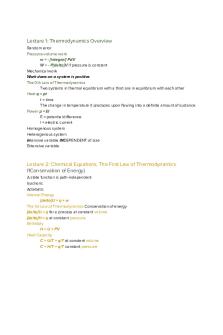
CHEM303 final exam review
- 4 Pages

Psychology Final Exam - Review
- 13 Pages
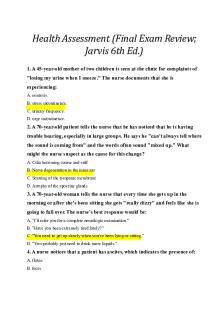
Jarvis Final Exam Review
- 12 Pages
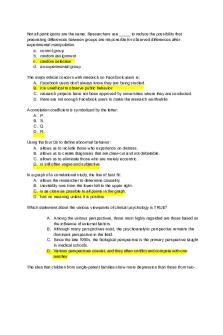
Final exam review
- 96 Pages
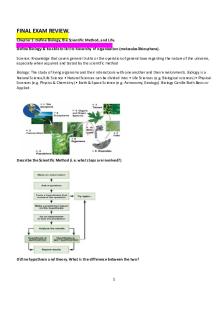
Final Exam Review
- 48 Pages
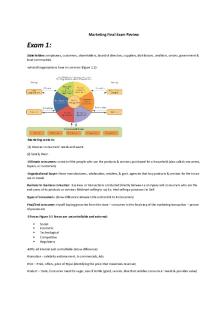
Marketing Final Exam Review
- 15 Pages
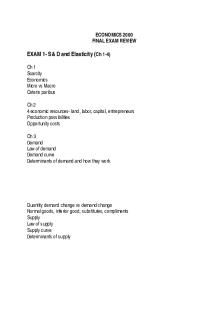
Final exam review
- 8 Pages
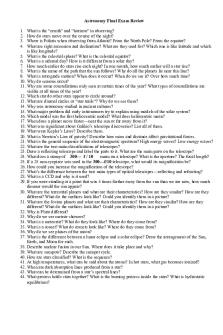
Astronomy Final Exam Review
- 2 Pages
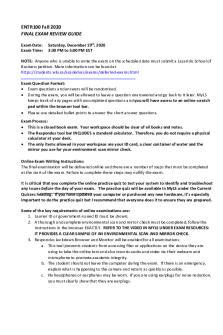
Final Exam Review Guide
- 4 Pages

Final exam review flsp4420
- 5 Pages

Theo Final Exam Review
- 16 Pages

Entrepreneurship final exam review
- 33 Pages
Popular Institutions
- Tinajero National High School - Annex
- Politeknik Caltex Riau
- Yokohama City University
- SGT University
- University of Al-Qadisiyah
- Divine Word College of Vigan
- Techniek College Rotterdam
- Universidade de Santiago
- Universiti Teknologi MARA Cawangan Johor Kampus Pasir Gudang
- Poltekkes Kemenkes Yogyakarta
- Baguio City National High School
- Colegio san marcos
- preparatoria uno
- Centro de Bachillerato Tecnológico Industrial y de Servicios No. 107
- Dalian Maritime University
- Quang Trung Secondary School
- Colegio Tecnológico en Informática
- Corporación Regional de Educación Superior
- Grupo CEDVA
- Dar Al Uloom University
- Centro de Estudios Preuniversitarios de la Universidad Nacional de Ingeniería
- 上智大学
- Aakash International School, Nuna Majara
- San Felipe Neri Catholic School
- Kang Chiao International School - New Taipei City
- Misamis Occidental National High School
- Institución Educativa Escuela Normal Juan Ladrilleros
- Kolehiyo ng Pantukan
- Batanes State College
- Instituto Continental
- Sekolah Menengah Kejuruan Kesehatan Kaltara (Tarakan)
- Colegio de La Inmaculada Concepcion - Cebu